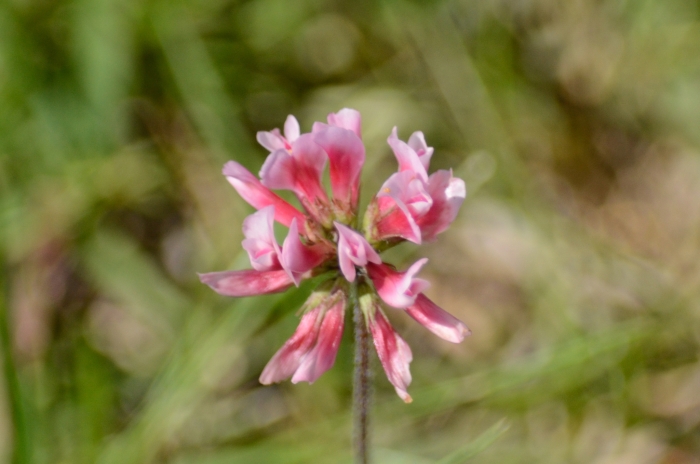Peanut Clover
(Trifolium polymorphum)
Peanut Clover (Trifolium polymorphum)
/
/

Pablo G. Fernández
CC BY 4.0
Image By:
Pablo G. Fernández
Recorded By:
Copyright:
CC BY 4.0
Copyright Notice:
Photo by: Pablo G. Fernández | License Type: CC BY 4.0 | License URL: http://creativecommons.org/licenses/by/4.0/ | Rights Holder: Pablo G. Fernández | Publisher: iNaturalist | Date Created: 2014-10-24T10:27:13-07:00 |














Estimated Native Range
Summary
Trifolium polymorphum, commonly known as Peanut Clover, is a perennial herb native to temperate regions of South America, particularly in Argentina and Uruguay. It is often found in grasslands, meadows, and along riverbanks, where it forms a low-growing mat. This species typically reaches a height of 0.5-1 feet (0.15-0.3 meters) and spreads 0.5-0.8 feet (0.15-0.25 meters). Peanut Clover has trifoliate leaves and produces dense, spherical flower heads that are white or pink, blooming profusely in the spring and summer. The flowers are modest in size but can be quite numerous, creating a carpet of color.
Peanut Clover is valued for its nitrogen-fixing ability, which enriches the soil and supports the growth of surrounding plants. It is used as a ground cover, in mixed borders, and as a green manure crop in agriculture. It is also planted in pastures for grazing due to its high nutritional value for livestock. Peanut Clover requires full sun to part shade and thrives in a range of soil types, including clay, loam, and sandy soils, provided they have medium to fast drainage. It is drought-tolerant once established and has a moderate water requirement. While generally disease-resistant, it can be susceptible to root rot in poorly drained soils.CC BY-SA 4.0
Peanut Clover is valued for its nitrogen-fixing ability, which enriches the soil and supports the growth of surrounding plants. It is used as a ground cover, in mixed borders, and as a green manure crop in agriculture. It is also planted in pastures for grazing due to its high nutritional value for livestock. Peanut Clover requires full sun to part shade and thrives in a range of soil types, including clay, loam, and sandy soils, provided they have medium to fast drainage. It is drought-tolerant once established and has a moderate water requirement. While generally disease-resistant, it can be susceptible to root rot in poorly drained soils.CC BY-SA 4.0
Plant Description
- Plant Type: Herb
- Height: 0.5-1 feet
- Width: 0.5-0.8 feet
- Growth Rate: Rapid
- Flower Color: White, Pink
- Flowering Season: Spring, Summer
- Leaf Retention: Deciduous
Growth Requirements
- Sun: Full Sun, Part Shade
- Water: Medium
- Drainage: Medium, Fast
Common Uses
Bee Garden, Butterfly Garden, Erosion Control, Groundcover, Low Maintenance
Natural Habitat
Native to temperate regions of South America, particularly in Argentina and Uruguay, in grasslands, meadows, and along riverbanks
Other Names
Common Names: Alsike Clover, White Clover
Scientific Names: , Trifolium polymorphum, Amoria polymorpa, Amoria polymorpha, Trifolium mirabile, Trifolium obcordatum var. beta, Trifolium reflexum, Trifolium rivale,
GBIF Accepted Name: